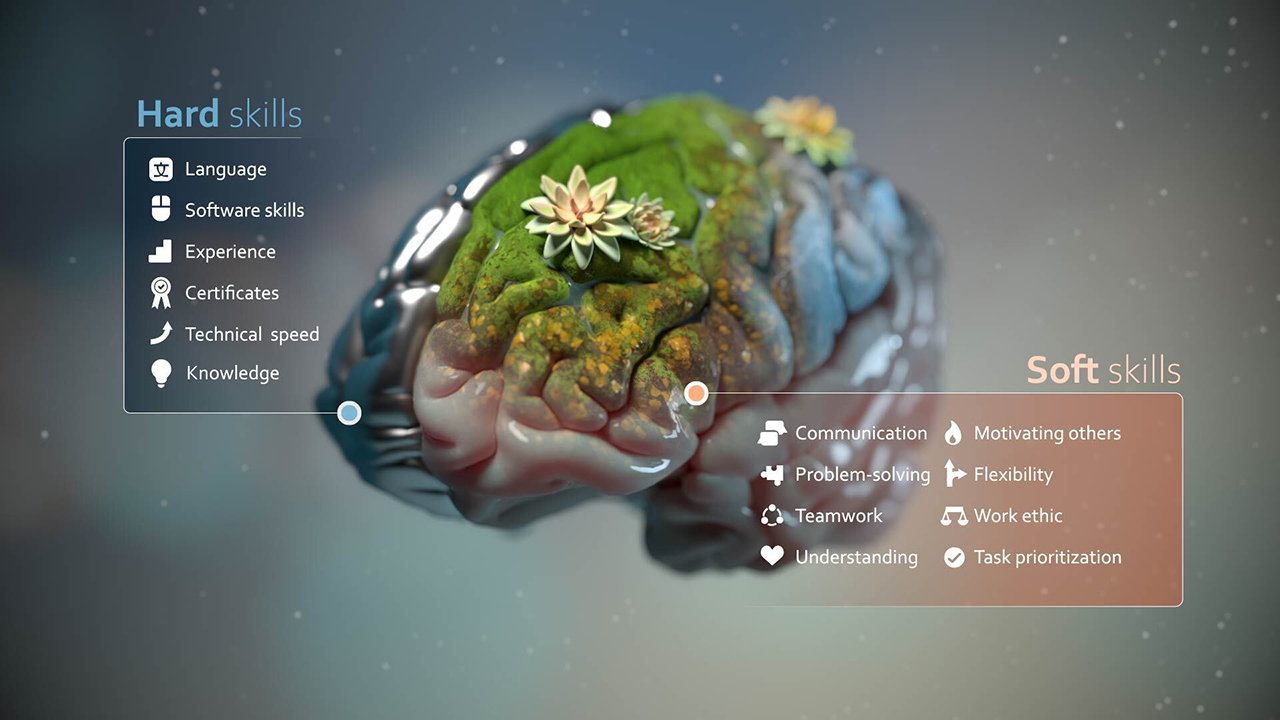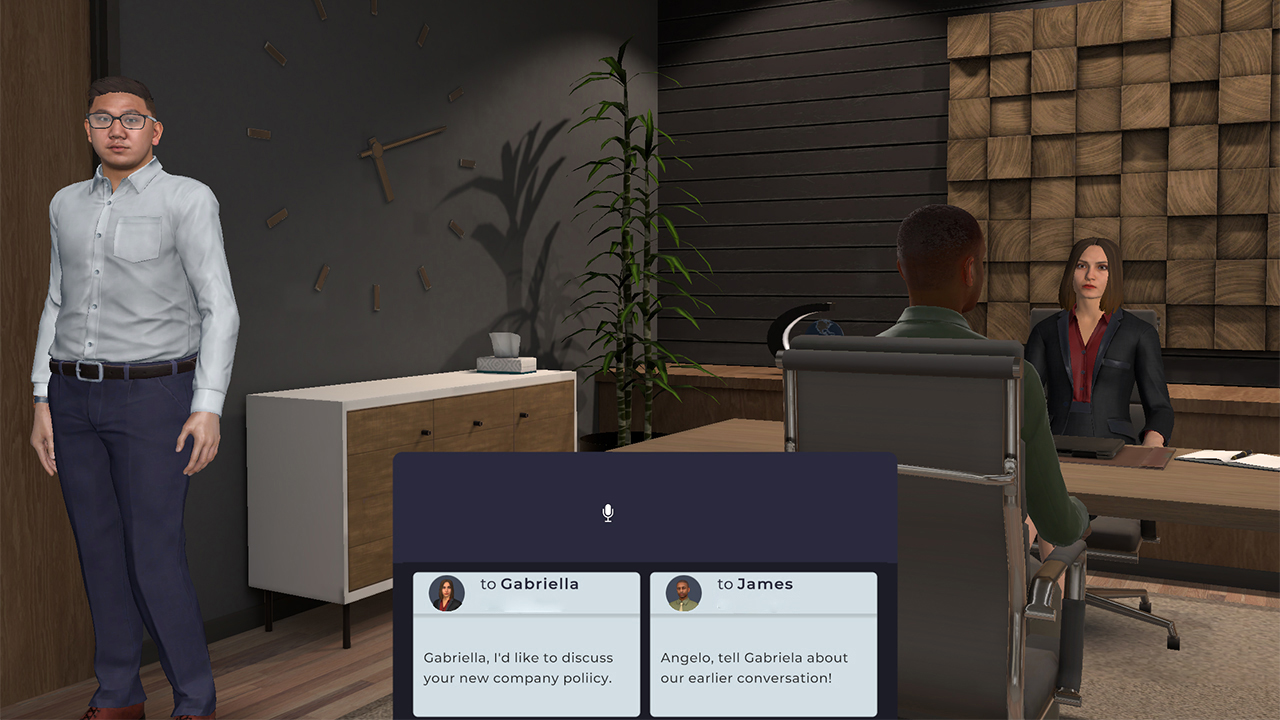Hard Skills vs. Soft Skills: What’s the Difference
Employees must possess various skills to succeed in the workplace, which can be grouped into hard and soft skills. They each encompass different aspects of the person’s overall contributions to the organization. Hard skills represent a person’s ability to accomplish specific work-based tasks, such as creating a document or editing a video, while soft skills are more difficult to quantify. They are related to emotional intelligence, mainly the person’s ability to express themselves and communicate with others in the workplace.
Hard skills are generally referred to as teachable skills, such as those taught in books or the classroom, but that doesn’t mean individuals are incapable of learning soft skills. Individuals tend to develop soft skills through life experience and personal relationships, but they can also improve their communication and empathy skills by participating in training exercises that mimic real-life experiences. While soft skills may be challenging to see, they play an essential role in the workplace. Identifying each person’s unique skill set can help teams improve communication and teamwork as they work toward common goals.

What are Hard Skills and Soft Skills?
Every person in the organization should know the difference between hard skills and soft skills to get a sense of their contributions. Managers must assess each person’s skill set when looking for areas to improve. They will also need to identify candidates with hard and soft skills that ultimately benefit the organization. Existing and potential employees should also highlight a mix of hard and soft skills to increase their chances of success. It begins with having a clear definition of both categories.
- Hard Skills
Hard skills encompass a range of different abilities and objectives. They are easy to recognize and often gained by going to school, studying, or on-the-job experiences. Hard skills are mainly displayed on a person’s resume, such as their course of study at the school or university they attended, the number of years of experience, or their proficiency with a specific program. Hard skills are also easy to quantify with data, such as the person’s grade point average (GPA), the number of awards or certificates, how fast they can type, or even the number of followers they have on social media.
These skills help individuals complete specific, quantifiable tasks in the workplace, such as writing memos, creating computer software programs, or manufacturing goods. Hiring managers often focus on a person’s hard skills when assessing their potential contribution to the organization, but their ability to complete an assignment may not accurately reflect their chances of success in the organization.
- Soft Skills
Soft skills can refer to various traits and characteristics depending on the person’s role. Managers’ and executives’ soft skills should include leadership, conflict resolution, and mentorship abilities. Soft skills enhance problem-solving, time management, teamwork, and cooperation among workers. These skills are especially beneficial for those that work in human resources. These individuals are responsible for resolving inter-employee disputes and protecting the rights of the staff. Regardless of the person’s role, everyone needs to communicate clearly and effectively with colleagues and clients to succeed in the workplace.
Effective communication is the key to success in any workplace, regardless of the nature of the interaction. Soft skills can take many forms and go by different names, including “people skills” or “interpersonal skills,” but they mainly refer to the person’s ability to interact with the people around them, including the words they use, their body language, and their tone of voice. They are utilized during in-person conversations and interviews and those that take place online, including video conferencing, emails, and text messages.
Individuals do not generally receive scholastic degrees in specific soft skills. They may feature them on their resume, but they are only observable through lived experience. Managers may try to assess the person’s soft skills through conversation during the interview process, but this may not accurately reflect the person’s ability to communicate on the job.
Soft skills are typically learned through life experience. They are directly related to the individual’s personality traits and are often shaped by how they were raised. People may stop developing their soft skills once they reach a certain age, but workers must learn how to communicate appropriately with their colleagues to succeed.
What are Hard Skills and Soft Skills Examples?
Workers may need to possess different types of hard and soft skills depending on the nature of the job at hand. Every organization has specific goals, and workers must work together by synchronizing their efforts to make these goals a reality.
Examples of Soft Skills:
- Communication and active listening
- Flexibility and compromise
- Personal accountability
- Patience and understanding
- Persuasion and motivating others
- Problem-solving and crisis management
- Teamwork and cooperation
- Task prioritization and work ethic
Examples of Hard Skills:
- Able to write and speak in another language
- Experience operating a machine or software program
- Work experience and accomplishments
- Degrees and certificates
- Knowledge of a subject, such as math, history, or science
- Technical speed and proficiency
What is the Difference Between Hard Skills and Soft Skills?
- Quantification
The main difference between the two is how they are measured and quantified in the workplace. Hard skills can quickly be evaluated and recorded in the workplace using different units of measure, such as the amount of time it takes the person to accomplish a task, the quality of their work, and how long they have been working in the industry. These data points can be added to a spreadsheet or a worker’s bio and assessed over time to see how much the employee has improved.
Soft skills often begin where hard skills end. Workers utilize soft skills when they have a question or need to work with someone else to complete their task. Their words and behavior will also affect those around them for better and worse. These skills, or lack thereof, are not immediately visible at work and may take different forms depending on the individual’s background and experience. They may be utilized during private exchanges not observed by others. They typically cannot be recorded or quantified in the same way as hard skills, making it difficult for employers to get a sense of each person’s communication abilities and track individual progress over time.
Despite these challenges, managers need to be able to assess a person’s soft skills, considering how important they are to the success of the organization. New technology is changing the way managers evaluate soft skills. They can have their workers participate in a relationship- and communication-based exercises using virtual reality. The program lets the user interact with a simulated human being to see how they respond to conflict or personal crises. The VR platform is designed to record and evaluate a person’s soft skills by assessing their body language and word choice. The program distills this information into a series of data points that managers can use to evaluate the individual’s strengths and weaknesses.
- Teachability
Individuals also acquire hard and soft skills through different means.
People learn hard skills by studying a subject and learning new concepts. They may attend a class or learn through experience to become proficient at a specific task. Individuals often set out to learn lessons independently because they are essential to earning a living in their chosen career path. This makes hard skills much easier to understand compared to soft skills. If a person needs to learn how to complete a task or use a program to get a job, they can follow a straightforward path to increase their proficiency.
Soft skills are typically acquired over years of life experience. They are closely tied to an individual’s personality and how their behavior affects those around them. Everyone has a unique way of communicating their needs and responding to interpersonal conflict, skills they have utilized since birth. People often use these skills unconsciously inside and outside of work. That is not to say that soft skills are not teachable. Contrary to popular belief, individuals can acquire soft skills under the right circumstances.
Developing and using soft skills in the workplace requires a certain level of self-awareness. Employees need to understand how their actions and behavior affect those around them. People may need to change their body language or use different words to express themselves in the office. They may also need to learn how to respond to specific challenges in the workplace, such as resolving disagreements between staff or working under stress or with limited resources. A person can take a class on emotional intelligence and communication, but they also need to utilize these skills in real-world environments, which tend to be unpredictable and more complex than anything they find in a book.
Individuals also need access to regular feedback and motivation. The organization needs to create a safe space for individuals to explore these concepts and practice utilizing what they have learned. This can include role-playing exercises that ask participants to put themselves in the shoes of others, which increases empathy.

The use of virtual reality as a training tool is changing the way workers learn soft skills. This technology allows the user to interact with a simulated human being powered by artificial intelligence. The program simulates human conflict and interpersonal relationships that mimic the complexities of the real world. The virtual element allows the participant to experiment with different responses and behavior until they achieve the desired results. Workers can then evaluate their choices during the simulation and how they affected the other person.
Unlike hard skills, workers also need access to a mentor when learning soft skills. The organization’s leaders must set an example of how these skills should be used in the workplace. Workers should ask questions during the training experience to expand on what they have learned.
Despite these differences, the line between hard skills vs. soft skills is not always clear. A person can use a specific program to complete a task; however, they are also using soft skills when interpreting the manager’s or client’s instructions, deciding how much time and effort they invest in the project, and setting their priorities for the day.
Employees can learn both skills, but they require different teaching techniques. Managers can use the latest tools to change how they teach workers soft skills, so everyone on the team can work together.
About Elara
Based in Northern California, Elara is a strategic creative agency that develops digital content for medical and industrial markets across the globe. For 20 years, Elara has partnered with clients to develop creative solutions to showcase their vision and transform digital content mediums – including virtual reality, mixed and augmented reality, 3D, and video. They specialize in creating deeply interactive experiences for teaching, training, marketing and sales. For more information, all parties should contact Melissa Herbold at information@elarasystems.com.
